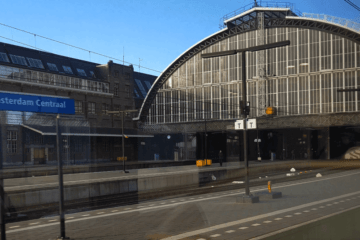There is a brisk traffic of express trains between the European metropolises. Depending on the route and the regions, very different train types are in use. Equipment, speed and permitted tickets are very different. Unfortunately, Wi-Fi is also not standard on all trains. The same applies to an on-board restaurant and services. An overview of the different train types and lines in Europe.
1. EuroCity (EC): The cozy classic

This train line is one of my absolute favorites. The European EuroCity Network (EC) was introduced in 1987 to increase mobility within Europe.
The following are binding standards:
- Cross-border traffic, as short as possible
- Existing on-board restaurant with menu for main meals
- Multilingual train staff: English skills are mostly available
- Air-conditioned cars in 1st and 2nd class
- Monitoring punctuality
- Stop only in big cities
To use the EC, train cards for long-distance transport are required. Fortunately, these are cheaper than for the ICE. However, these may not be used on the ICE, TGV and Thalys premium express trains. The other way around is of course possible.
However, cards for regional transport, such as Country tickets. Holders of a valid BahnCard can look forward to the usual discounts when purchasing the ticket.
For me, the most attractive aspect of regular use of the EuroCity is the national character of the train. The seats and interior contain elements typical of the country. The same applies to the menu in the on-board restaurant. There are significant differences between the individual lines. Both in terms of price and culinary delights. However, what they have in common with almost all older EuroCity trains is that there is no working Wi-Fi network. However, this leaves more time for a book or to enjoy the view.
You can also take your bike with you in all ECs. Special hanging devices are usually located at the beginning and end of each train. Reservations are required for bicycles in advance. Spontaneous takings are not possible.
1.1. EuroCity Switzerland: Zurich to Hamburg in a panorama car
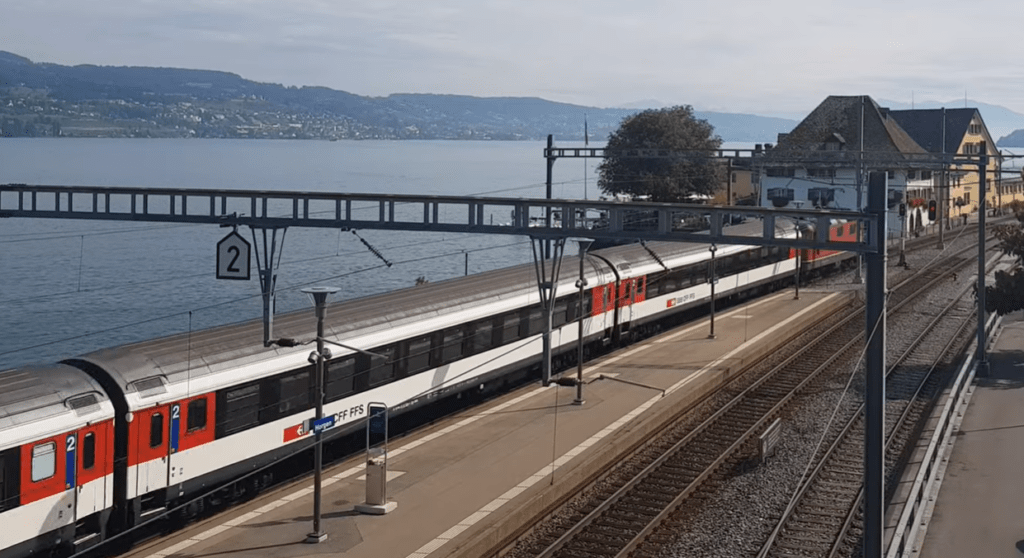
Various EC lines operate between Switzerland and Germany. One leads from Hamburg to Zurich. Intermediate stops include Bremen, Münster, Duisburg, Düsseldorf, Cologne, Koblenz and Mainz.
Particularly noteworthy is the section between Cologne and Mainz, which runs along the Rhine. Past the Loreley, castles, vineyards and a historic customs station.
One of the highlights of the train is the panorama car in 1st class. The large windows allow an optimal view and light up the wagon pleasantly. Another eye-catcher is the neat on-board restaurant from the 1990s.
Unfortunately, the food on offer is not as inexpensive as in the Czech version of EuroCity.
1.2. EuroCity Eastern Europe: Pure nostalgia in the on-board restaurant
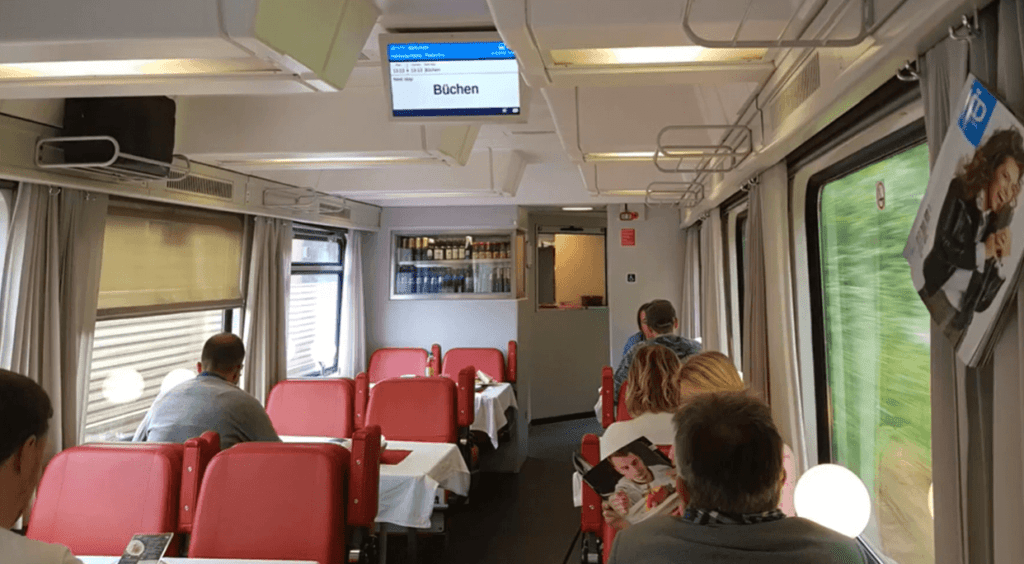
Red leather seats, table lamps, hearty food, numerous types of beer and good service: the on-board restaurant in the Czech EC leaves little to be desired
From my personal point of view, there is hardly a more pleasant place to travel by train than the on-board restaurant in an Eastern European EC. This type of train is mainly used on routes in Germany, the Czech Republic, Slovenia, Slovakia and Hungary. The classic Eastern Bloc charm still resonates in many of the wagons. Especially the dining car in the Czech EC 171 Johannes Brahms is highly recommended.
The dishes are freshly fried and do not come out of the microwave. The sirloin is available for € 10.90. A piece of duck with a side dish and salad costs € 8.70. For comparison: In the EC in Switzerland, the Cesar Salad alone costs 16.80 €. A large beer (0.5) is available in EuroCity in the Czech Republic for € 3.60. The menu includes Grambrinus, Pilsner Urquell and other high-quality beers that are served in traditional mugs.
The route of the Czech EC 171 leads from Hamburg to Prague via Berlin and Dresden. Particularly noteworthy on this route is the section through Saxon Switzerland, which leads behind Dresden and through the border town of Bad Schandau.
Other routes of the Eastern European EuroCity include:
- Budapest – Hamburg via Prague and Bratislava
- Prague – Berlin
- Budapest – Kosice
- Beograd – Budapest
- Budapest – Vienna
1.3. Danish EuroCity: The “rubber nose”
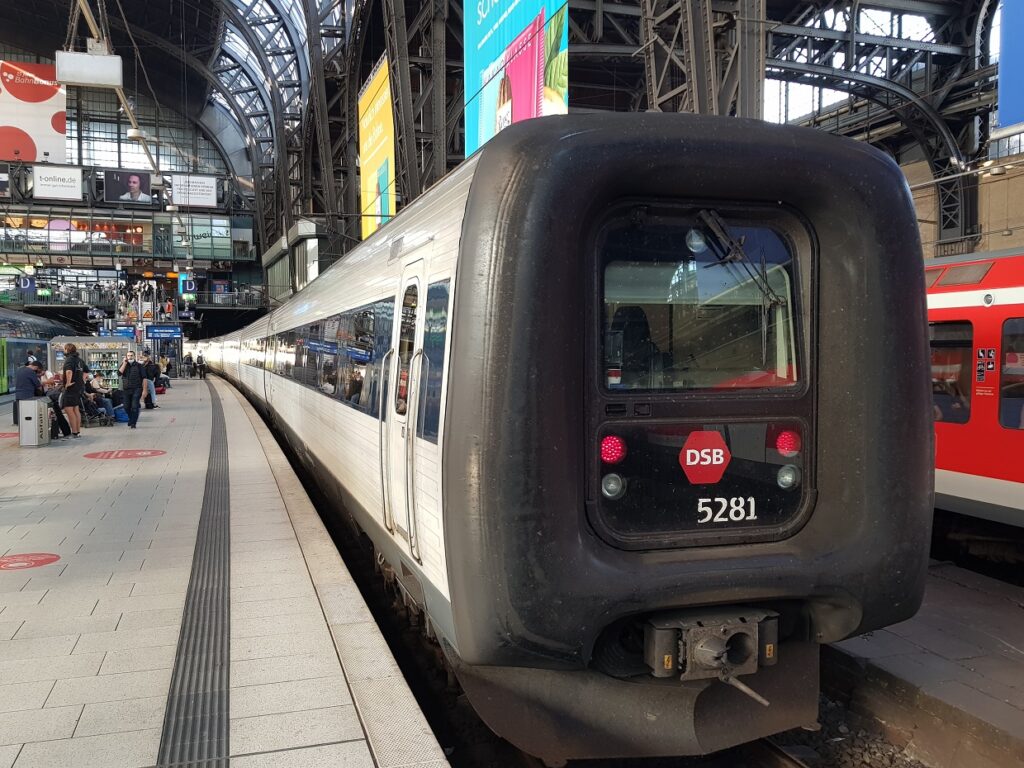
Compared to the EuroCity trains from Eastern Europe and Switzerland, the Danish EC is a clear contrast. Visually, the “rubber nose” immediately catches the eye with its unique design, which clearly stands out from all other trains and is a clear unique selling point.
But the inner workings are also very different. Unfortunately, passengers are looking for an on-board restaurant in vain. In return, you receive wide, comfortable seats. In addition, there are artistically designed posters in the interior. In some of the wagons there are drawings that are more reminiscent of children’s books.
Although there is a large Wi-Fi symbol on the outside, a working connection should not be expected. You can also take your bike with you here. As with the EC lines from Switzerland and Eastern Europe, there are parking spaces in the front and rear of the train.
1.4. EuroCity-Express: From Frankfurt to Mailand
Since 2017 there has been a new quick connection between Germany and Italy. The EuroCity Express (ECE) runs from Frankfurt via Zurich to Milan.
Compared to the regular ECs, the express version reaches a top speed of over 250 km / h. However, this extra speed also costs a little more. In Germany, the ECE is subject to the ICE tariffs and is therefore more expensive than normal EuroCity trains.
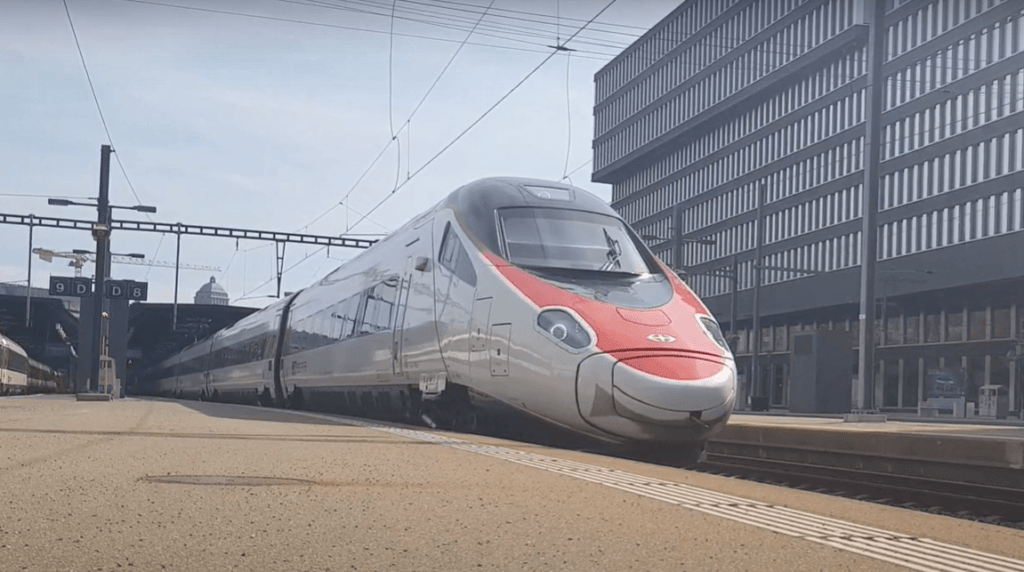
How do I book a EuroCity train?
Tickets for the EuroCity are available on regular booking portals such as bahn.de. Simply enter the desired route and the available connections will be displayed. The type of train is also specified. The cheapest price is €18.90 for a trip from Berlin to Prague with the super saver price Europe.
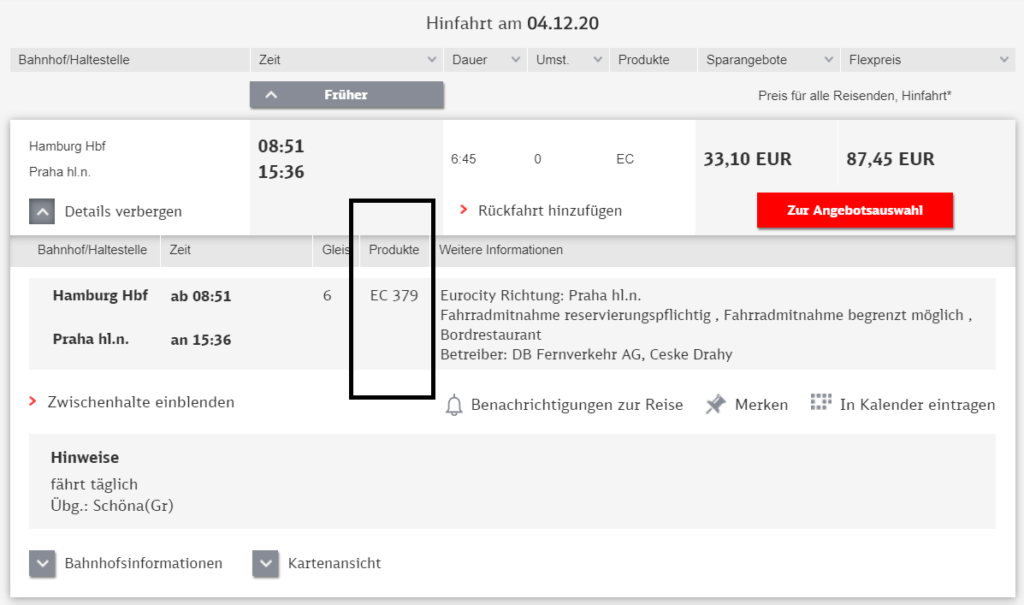
2. Intercity-Express (ICE): With high speed through Germany and Europe
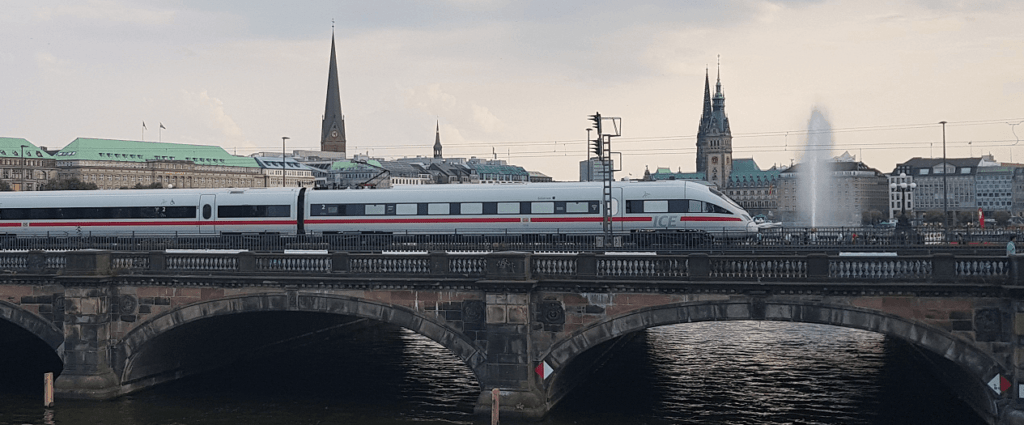
The Intercity-Express is the fastest train in Germany. There are a total of 4 different generations (ICE 1-4) with different construction series.
The most widespread is the ICE 3 with a total of 80 existing copies. The third generation is also the only one that achieves a top speed of over 320km / h. The ICE 4 only reaches 250 km / h. However, the high-speed lines, on which top speeds of over 300 km / h are achieved, are currently limited to very few routes.
All ICE trains are equipped with Wi-Fi. There are sockets for charging electronic devices between the seats.
The on-board restaurant is usually located directly between 1st and 2nd class. There are almost 180 ICE train stations across Germany. Extremely fast direct connections with few stops exist between some metropolises in Germany. From Hamburg to Frankfurt, the ICE takes just 3:21 hours to cover the 500 km long route. The Intercity-Express also runs in the neighboring countries of Austria, Switzerland, Belgium, France and the Netherlands.
The cheapest ICE ticket costs € 17.90. At irregular intervals, Deutsche Bahn offers promotions that allow access to even cheaper tickets. These include, for example, the super saver price Young. Young people under the age of 27 have the option of receiving a ticket for € 12.90 within the promotional period.
3. InterCity: More stops, less comfort
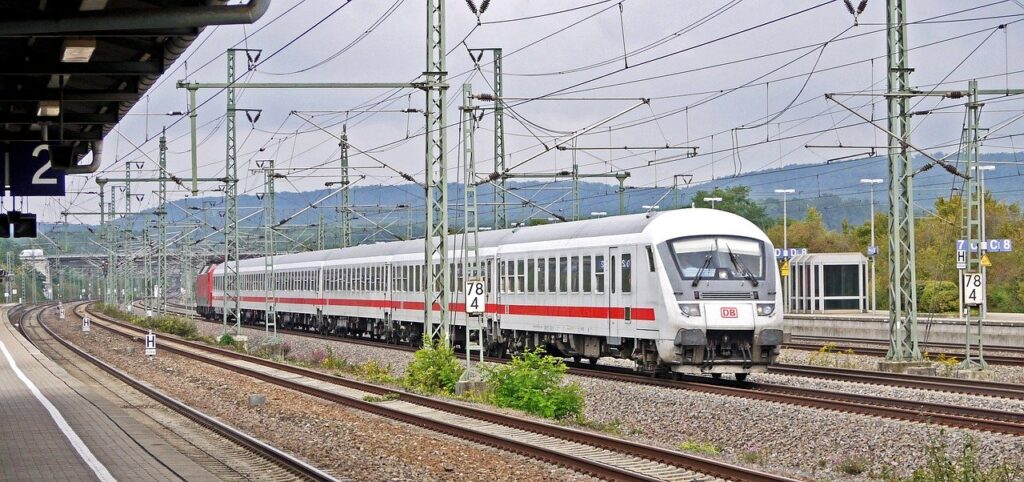
Compared to the Intercity-Express (ICE), the normal Intercity (IC) is significantly slower. The cruising speed is usually between 160 – 200 km / h. The trains used are clearer than the ICEs.
In return, the tickets are a bit cheaper and there are significantly more stations.
There are clear differences between the IC types. Some of the newer, two-story ICs have WiFi and sockets between the seats. But there is no on-board restaurant here. The older ICs, on the other hand, have neither WiFi nor sockets, but a small on-board bistro, in which a manageable selection of drinks and food is offered.
4. Norwegian express train Vy: It can hardly be quieter
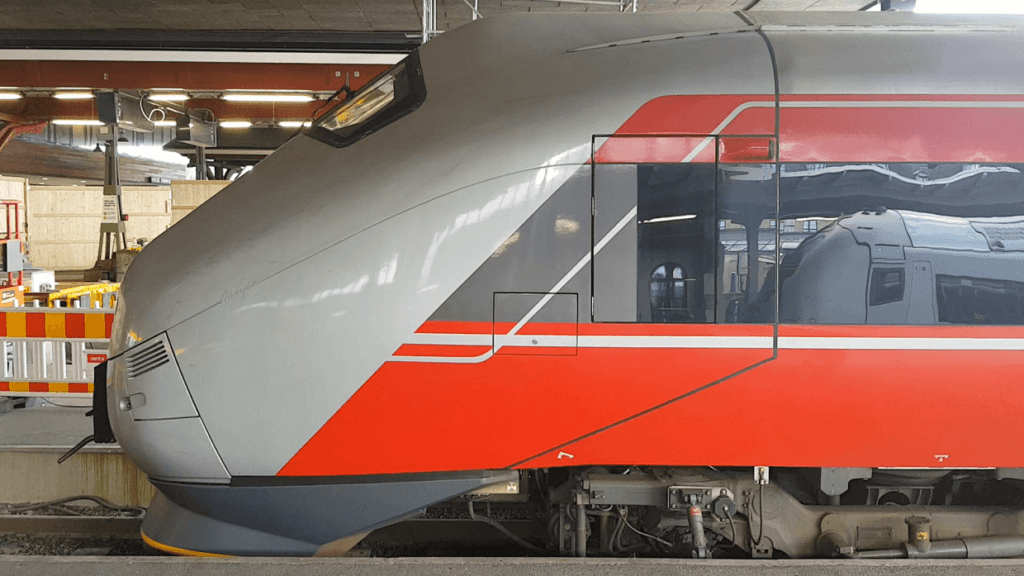
Traveling by train in Scandinavia is a recommended pleasure. The trains are usually very well maintained. There is also a fabulous landscape. In particular, the route from Gothenburg to Oslo offers a stunning view. Therefore, a flight should be absolutely avoided in order not to miss this landscape. And of course also to save CO2.
The Norwegian express train Vy also has the advantage that it hardly lets any noise into the interior of the wagon. No train ride so far has been quieter. Absolutely relaxing.
There is also a stable Wi-Fi network. Coffee is also free. Unfortunately, the on-board restaurant is nil. You cannot have everything.
Compared to other products in high-priced Scandinavia, train tickets are relatively cheap. For a trip from Gothenburg to Oslo I only paid €35.
5. inOui (TGV): Comfortably through France
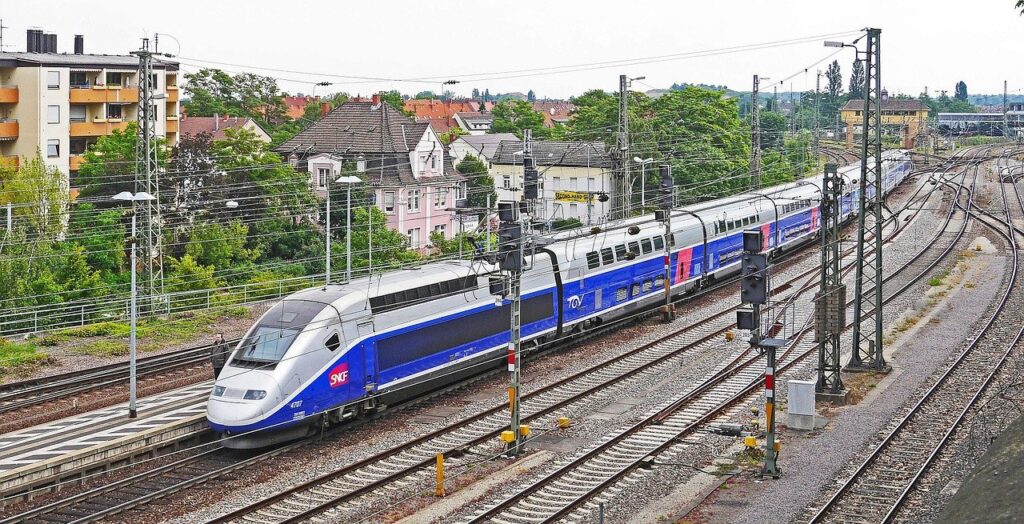
Along with the Austrian Railjet and the German ICE, the TGV is one of the most modern trains in Europe. The double-decker express trains connect the major cities of France with each other. They also operate in the neighboring countries of Germany and Belgium.
In 2017, the operating company SNCF decided to rename the TGV to inOUI (in-o-wie). This happened as part of a modernization and service offensive. Nevertheless, the name TGV is absolutely common for the French express train.
All trains are equipped with Wi-Fi. There is also an online and entertainment platform with an integrated chatbot that helps with service inquiries.
The trains also have their own bistro where cold and warm dishes can be eaten. Compared to the on-board restaurants in the EC, Railjet and ICE, these are more small snacks than really full meals.
6. Railjet: First class service
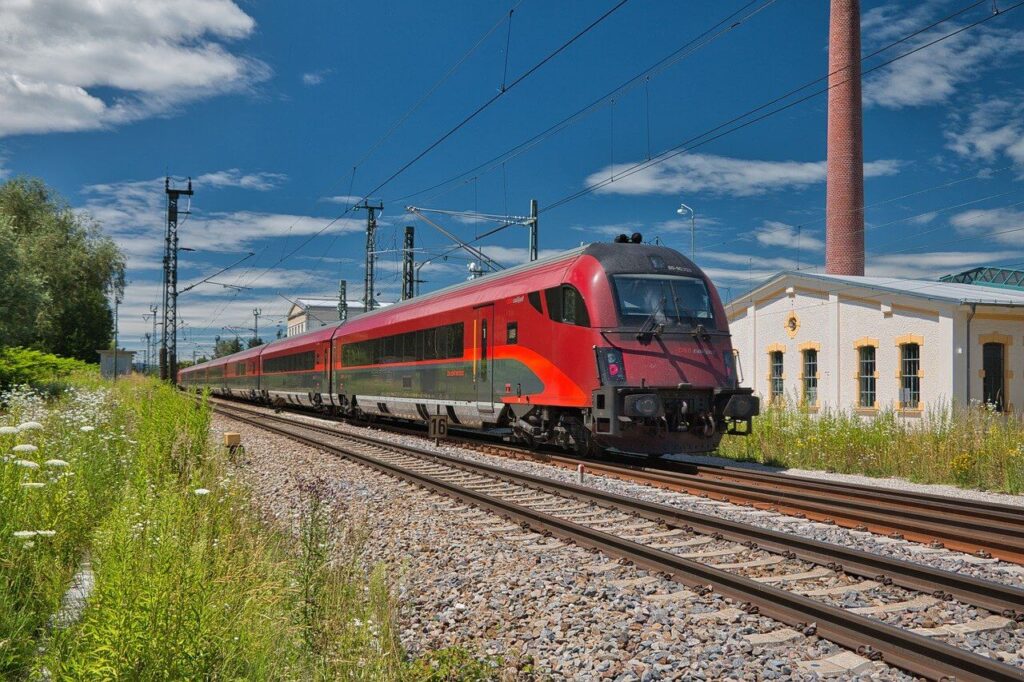
The Railjet (RJ) is one of my absolute favorites. No other train in Europe is more modern. In addition to 1st and 2nd class, there is also a business class, which has extra large spaces between the seats. The Wi-Fi works perfectly and the rows of seats have sockets in all categories.
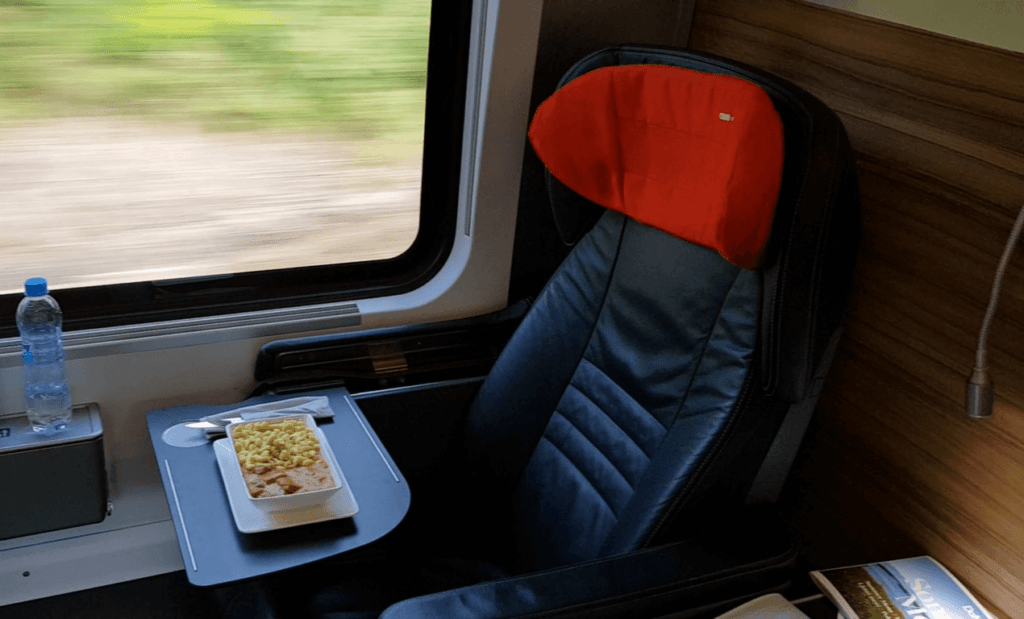
In the business class there is the option of having the seat delivered to the order. Alternatively, you can visit the on-board restaurant.
In addition to the major Austrian cities of Vienna, Linz, Klagenfurt and St. Pölten, the Railjet connects numerous destinations in neighboring countries. There are direct connections from Vienna to Budapest, Prague, Zagreb, Warsaw and Zurich. The associated night train line is called Nighjet (NJ) and connects Hamburg with Vienna.
7. Eurostar: express train connection between France, UK, Netherlands, Germany and Belgium
Headquarters of the Eurostar Int. Ltd. is london. The company emerged from a merger of the French railway company SNCF, the Belgian SNCB and the British railway company BR.
From the British capital, the connections run through the Eurotunnel to Paris, Brussels, Amsterdam, Rotterdam, Cologne and Frankfurt. The departure station in London is St. Pancras station. Since Great Britain is not a member of the Schengen area, passport controls take place here before access to the platforms. Therefore, when traveling to and from the UK, a lead time of 45 – 60 minutes before the train departs. The control counters close 30 minutes before the train departs. In the case of connections between the member states of the Schengen area, passport controls are usually only carried out at random on board.
From Paris to London in 2:20 hours at 300km/h
The Eurostars train model is based on the French TGV Atlantique. A cruising speed of almost 300 km / h is achieved en route. The connection from Paris to London takes just 2:20 hours. It is your own fault if you get on the plane here.
All trains are equipped with Wi-Fi. Passengers in the Standard Premier ticket class can look forward to a small snack and drink that will be brought to the seat. Business Premier customers receive a full meal based on the time of day. Standard class passengers can use the on-board restaurant for self-catering.
In terms of price, the Eurostar trains are among the most expensive in Europe. A one-way trip from London to Paris costs a whopping €308 in the Business Premier category. The standard ticket has a normal price of €220.
Cheap train tickets for the Eurostar are usually only available with a long lead time. And mostly only for the Standard and Standard Premier categories. Depending on the occupancy, standard tickets for €65 may be available if you book four weeks in advance.
With an appropriate reservation it is possible to bring bicycles. Animals, on the other hand, may only be taken to a very limited extent. Pets are not allowed. Only assistance dogs, for which a permit must be presented, are allowed.
